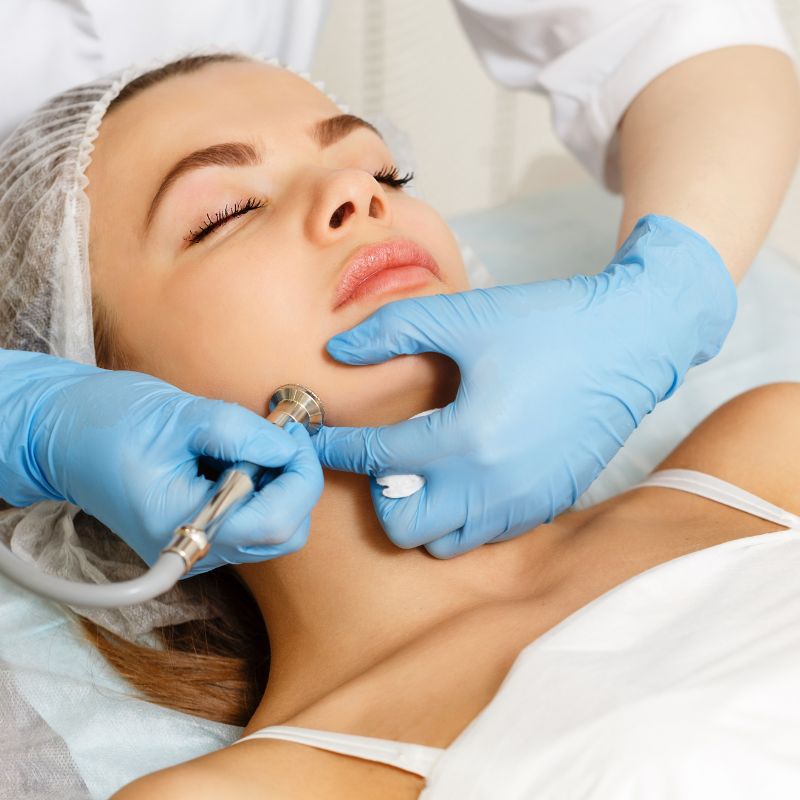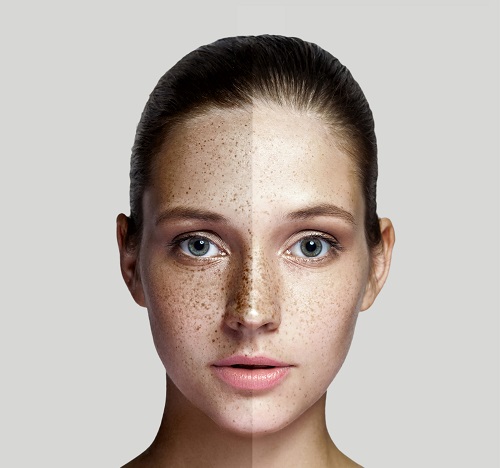Dermatologist-Recommended Techniques for Skin Pigmentation Treatment
Dermatologist-Recommended Techniques for Skin Pigmentation Treatment
Blog Article
The Ultimate Solution for Persistent Skin Pigmentation Issues Exposed
Skin pigmentation problems can be a source of frustration for several individuals, often showing to be immune to conventional therapies. The vital lies in comprehending the root triggers of skin staining and implementing a comprehensive strategy that not only addresses existing coloring yet additionally avoids its reoccurrence.
Recognizing Skin Coloring Creates
Skin pigmentation is a complicated procedure influenced by numerous interior and outside factors that add to the development of dark places or spots on the skin. The primary source of skin coloring is the overproduction of melanin, the pigment accountable for hair, eye, and skin color. This overflow can be activated by variables such as sunlight direct exposure, hormonal adjustments, inflammation, and skin injuries.
Sunlight direct exposure is one of the leading root causes of skin pigmentation, as UV rays boost melanocytes to create even more melanin, bring about tanning or the development of dark areas. Hormone changes, especially while pregnant or as a result of hormone problems, can also cause skin pigmentation concerns like melasma or chloasma. Swelling caused by conditions like acne or eczema can cause post-inflammatory hyperpigmentation, leaving persistent dark marks on the skin.
Comprehending these reasons is vital in creating effective treatments for skin pigmentation problems. By addressing the hidden elements that contribute to melanin production, targeted skin care regimens, specialist therapies, and lifestyle modifications can help handle and minimize skin coloring issues.
Topical Therapies for Hyperpigmentation
Having established the underlying sources of skin pigmentation, it is essential to discover efficient topical treatments for attending to hyperpigmentation concerns. Topical therapies are a prominent option for managing hyperpigmentation as they can target certain locations and are normally simple to include into skin care regimens. One of one of the most typical active ingredients in topical therapies for hyperpigmentation is hydroquinone, which functions by preventing the enzyme liable for melanin manufacturing. However, hydroquinone may not be ideal for all skin types and can cause irritation in some people.
Other effective topical treatments for hyperpigmentation include kojic acid, which is originated from fungi and can help lighten dark places by preventing melanin production. Vitamin C is likewise a prominent selection due to its lightening up properties and capacity to level complexion. In addition, components such as retinoids and niacinamide can aid boost skin texture and minimize the look of pigmentation in time.
When utilizing topical therapies for hyperpigmentation, it is important to use sun block everyday to avoid additional eclipse of the skin and to seek advice from a skin specialist to identify one of the most suitable treatment for individual skin issues. (Skin Pigmentation Treatment)
Specialist Procedures for Coloring Adjustment
Professional skin specialists typically recommend a range of innovative procedures for correcting skin coloring concerns. One typical expert therapy is laser therapy, which targets pigmented locations with high-intensity light to break down melanin and lower hyperpigmentation. An additional effective treatment is chemical peels, where a chemical remedy is used to the skin to exfoliate the external layer, disclosing new, equally pigmented skin underneath. Microdermabrasion is a non-invasive treatment that utilizes a minimally abrasive tool to delicately sand the skin, enhancing total texture and reducing coloring abnormalities.
For extra extreme situations of pigmentation, skin doctors may recommend intense pulsed click here now light (IPL) treatment, which targets melanin with broad-spectrum light to fade dark places progressively. It is vital to seek advice from with a qualified skin doctor to figure out the most ideal treatment choice based on individual skin type and pigmentation issues.


Way Of Living Modifications to Combat Skin Staining
Integrating nutritional modifications and sunlight security practices can significantly help in resolving skin staining issues. A diet plan abundant in minerals, vitamins, and antioxidants can view website help boost total skin wellness and lower coloring problems. Foods like berries, citrus fruits, leafed eco-friendlies, and nuts can supply essential nutrients that support skin regeneration and combat oxidative tension, which can add to skin staining. Additionally, staying moisturized by consuming an ample quantity of water daily can likewise advertise skin health and assist in maintaining an also complexion.
Sun defense is essential in protecting against additional skin staining. UV rays can aggravate coloring troubles and enhance the threat of establishing dark areas. Including daily use sunscreen with a high SPF, wearing safety apparel, and seeking color throughout peak sunlight hours can help shield the skin from damaging UV radiation. Furthermore, avoiding extreme sun direct exposure and tanning beds can aid in protecting against brand-new coloring issues from occurring. By making these way of life modifications, individuals can take aggressive steps towards combating skin staining and promoting a much healthier skin.
Upkeep Tips for Long-Term Pigmentation Control
To guarantee sustained monitoring of skin discoloration, executing consistent skin care routines along with nutritional changes and sun protection methods is crucial. Consistency is essential in keeping long-term control over coloring concerns. Continue utilizing products that target coloring, such as serums including ingredients like vitamin C, niacinamide, or kojic acid, to hinder melanin manufacturing and fade existing staining. Normal peeling with gentle scrubs or chemical exfoliants can help slough off dead skin cells, permitting much better penetration of treatment products. Additionally, including an everyday sunscreen with a high SPF is important to protect against further coloring brought on by UV exposure. Bear in mind to reapply sun block throughout the day, especially if outdoors. Keeping a healthy diet plan abundant in anti-oxidants, minerals, and vitamins can support skin wellness and total coloring control. Hydration is additionally vital for skin revival and regrowth. By sticking to these upkeep ideas carefully, people can effectively manage persistent skin pigmentation in the future.

Conclusion
In final thought, resolving skin coloring requires a complex check it out method involving recognizing the causes, utilizing topical therapies, going through expert treatments, making lifestyle adjustments, and keeping long-term control. By integrating these strategies, people can efficiently fight stubborn skin staining issues and accomplish a much more even and radiant complexion.
Skin pigmentation is an intricate procedure influenced by various inner and external aspects that contribute to the formation of dark areas or patches on the skin. The primary cause of skin coloring is the overproduction of melanin, the pigment accountable for hair, skin, and eye color. One more efficient procedure is chemical peels, where a chemical solution is applied to the skin to scrub the outer layer, revealing brand-new, equally pigmented skin underneath (Skin Pigmentation Treatment). Foods like berries, citrus fruits, leafed environment-friendlies, and nuts can provide important nutrients that support skin regeneration and battle oxidative stress, which can contribute to skin discoloration. Staying hydrated by consuming alcohol an adequate amount of water daily can likewise promote skin health and wellness and assist in maintaining an also skin tone
Report this page